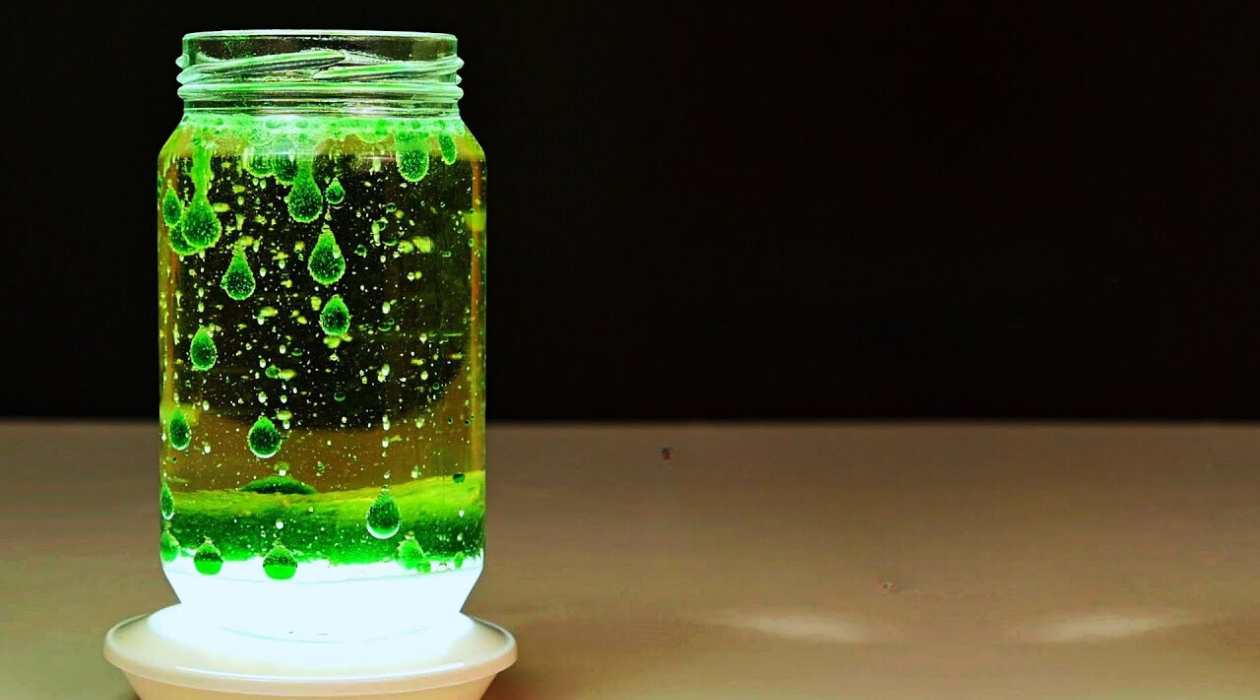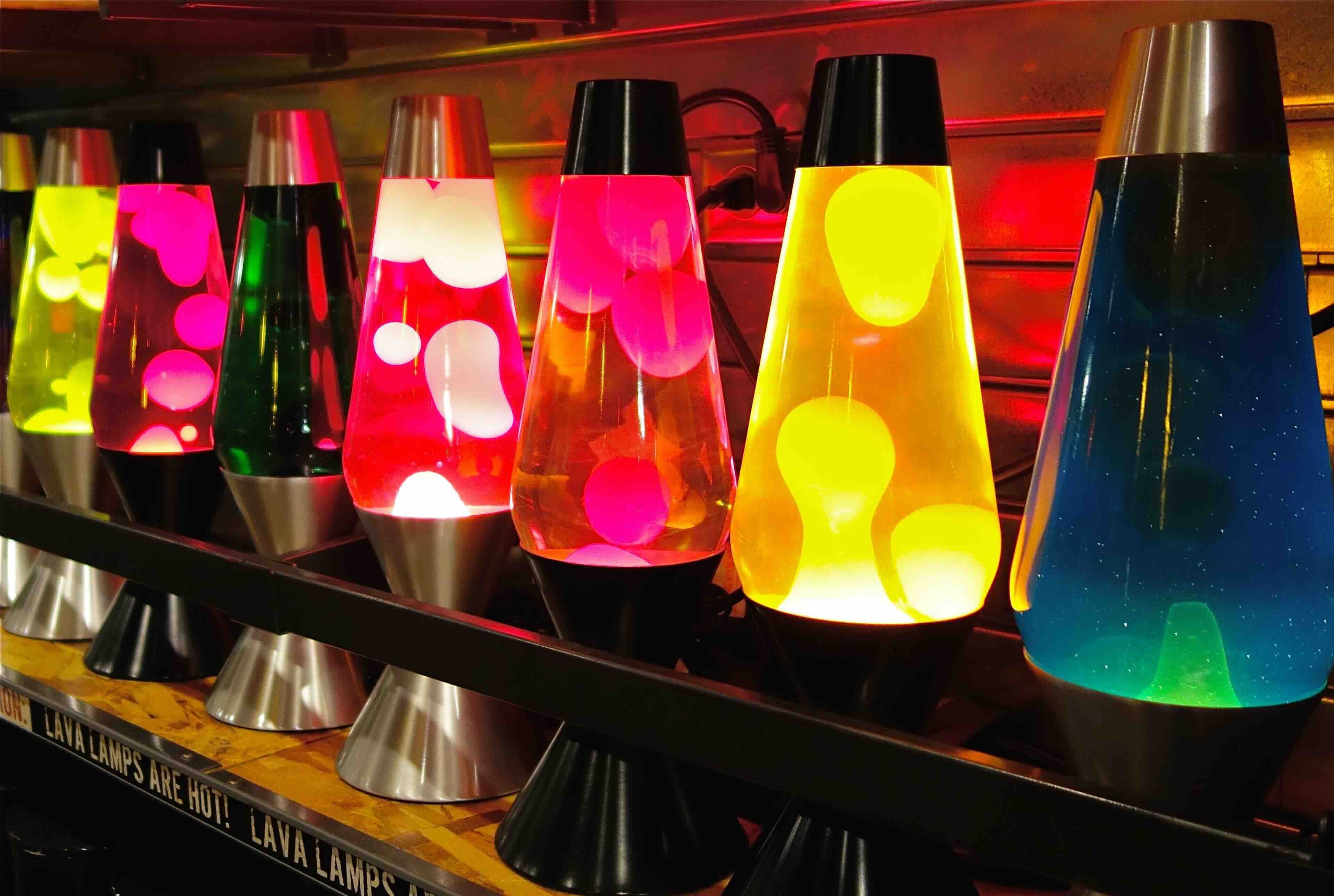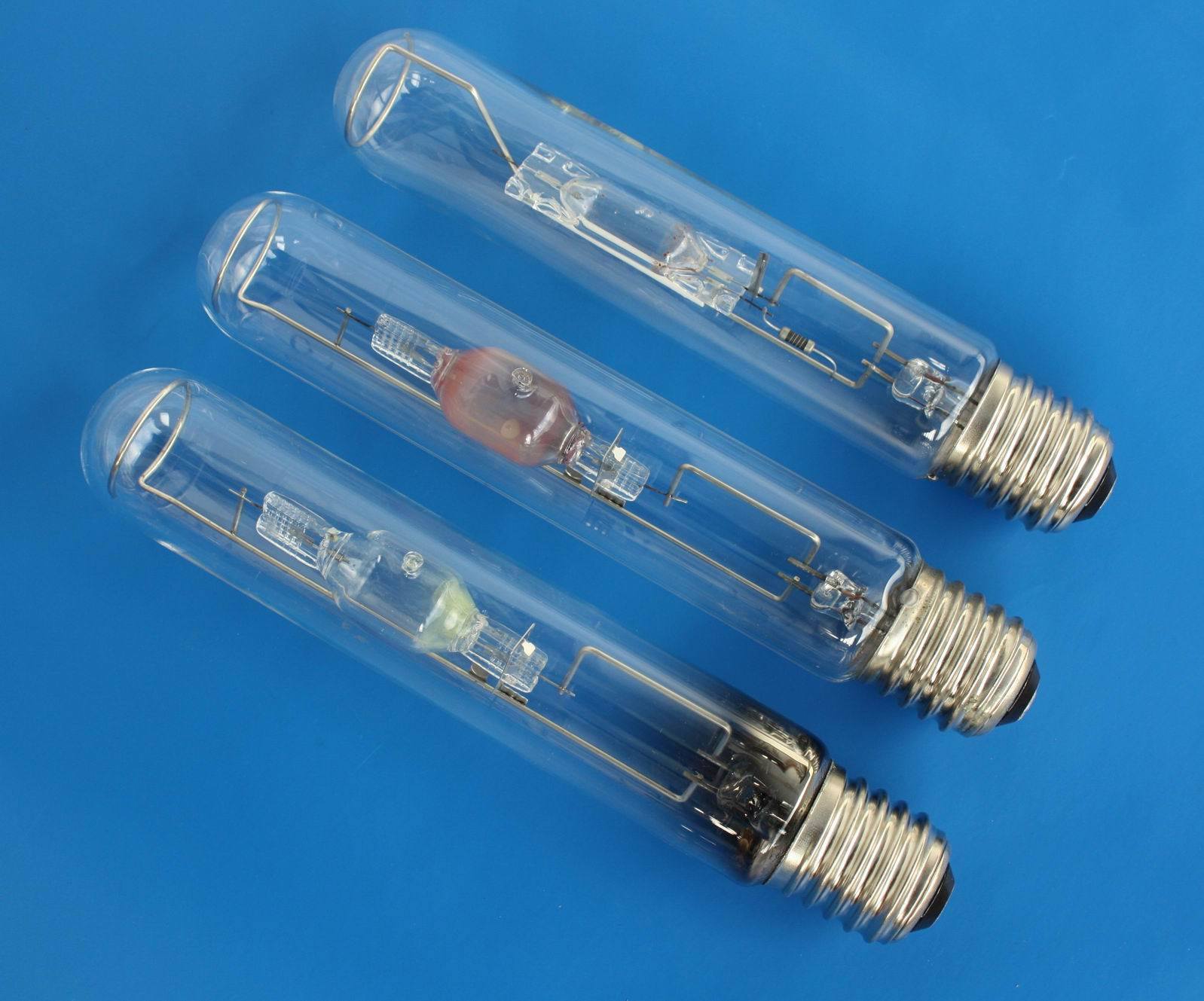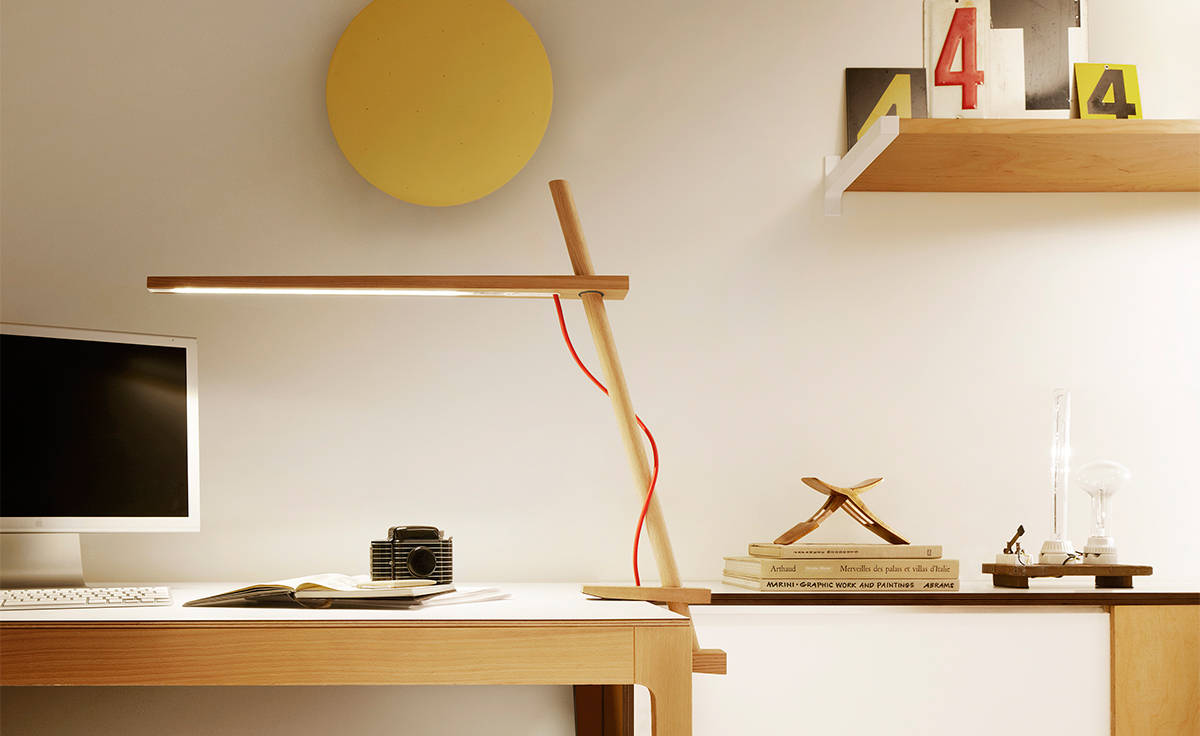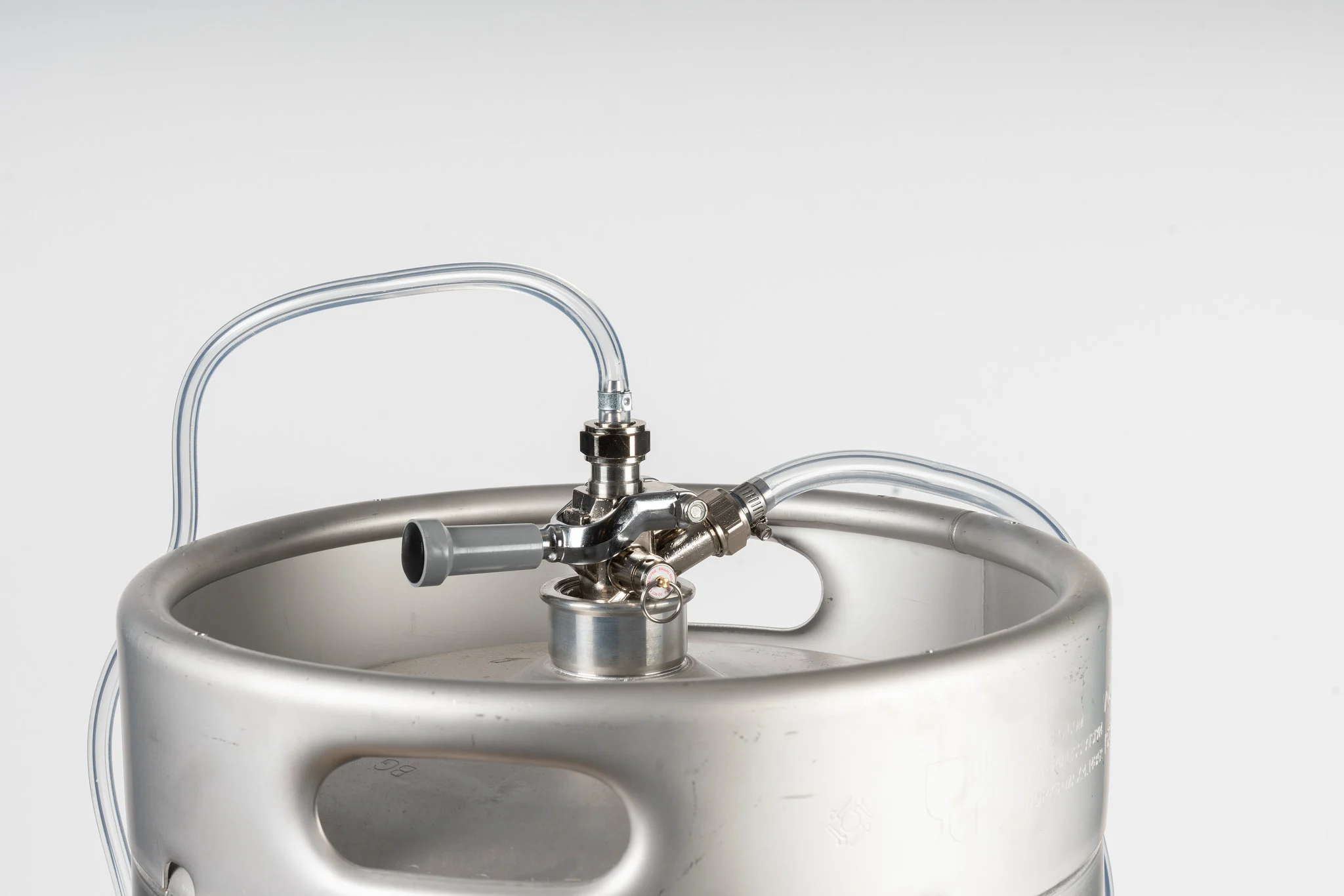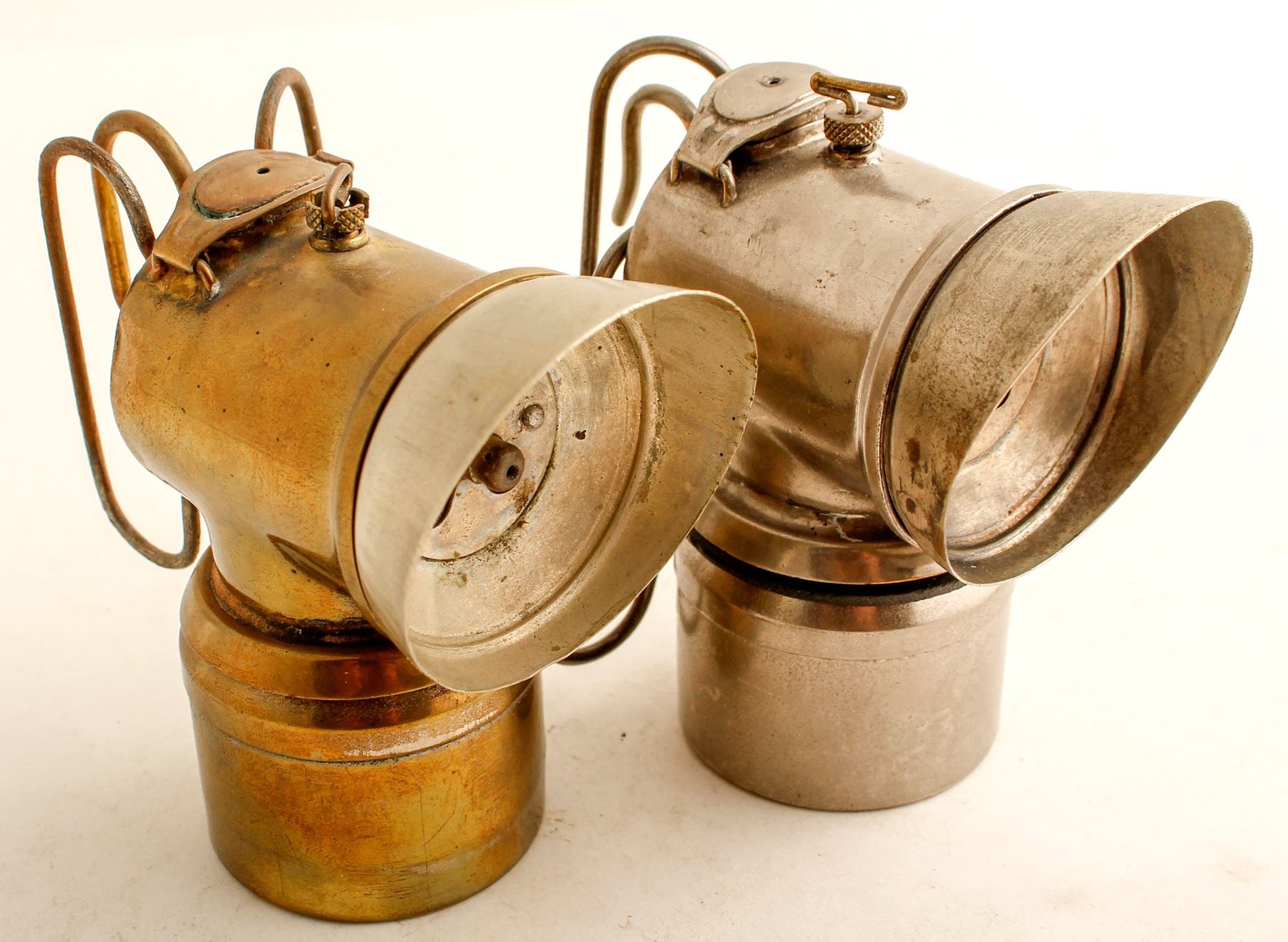

Furniture
How Does A Carbide Lamp Work
Modified: January 19, 2024
Learn how a carbide lamp works and its uses in furniture manufacturing. Discover the fascinating science behind this essential tool.
(Many of the links in this article redirect to a specific reviewed product. Your purchase of these products through affiliate links helps to generate commission for Storables.com, at no extra cost. Learn more)
Introduction:
Welcome to the fascinating world of carbide lamps! These ingenious devices have a long and storied history and have played a significant role in illuminating our lives. In this article, we will delve into the inner workings of carbide lamps, exploring their components, the chemical reactions that power them, and their various applications.
Carbide lamps, also known as acetylene lamps, were one of the earliest forms of artificial lighting. They were widely used in the late 19th and early 20th centuries, before electric lights became widely available. These lamps provided a reliable and portable source of light, making them indispensable for miners, explorers, and outdoor enthusiasts.
The carbide lamp’s functionality revolves around the chemical reaction between calcium carbide and water, which produces acetylene gas. This gas is then ignited to produce a bright, steady flame. The lamps were typically used in hazardous environments such as mines, caves, and outdoor expeditions, where reliable lighting was crucial for safety and productivity.
While carbide lamps have been replaced by more modern lighting technologies, enthusiasts and collectors still admire their unique charm and historical significance. So, let’s embark on a journey to uncover the inner workings of these remarkable lamps, starting with a brief history of their development.
Key Takeaways:
- Carbide lamps, powered by a chemical reaction between calcium carbide and water, provided reliable and portable light for mining, exploration, and industrial applications before the advent of electric lighting.
- While carbide lamps have been largely replaced by electric lights, their historical significance, portability, and long burn time continue to captivate enthusiasts and collectors, preserving the legacy of these remarkable devices.
Read more: How Does A Lamp Work
History of Carbide Lamps:
The concept of using calcium carbide to produce light dates back to the 1860s when an engineer named Thomas Willson discovered the flammable properties of acetylene gas. Inspired by this discovery, Willson developed the “Union Carbide,” a device that utilized the reaction between calcium carbide and water to generate acetylene gas for lighting purposes.
Willson’s invention quickly gained popularity and became the foundation for the development of carbide lamps. These lamps were first introduced in the early 1900s and rapidly gained widespread use in industrial and outdoor settings.
Initially, carbide lamps were primarily employed in mining operations. Miners relied on these lamps to navigate through dark and treacherous underground tunnels. The reliable and portable light source provided by carbide lamps significantly improved safety and productivity in the mining industry.
Carbide lamps also found their way into other industries, such as exploration and outdoor activities like caving and camping. Explorers and adventurers utilized carbide lamps to light their path in remote and rugged environments, where electricity was not readily available.
One of the earliest and most well-known manufacturers of carbide lamps was the Justrite Manufacturing Company, founded in 1906 by John E. Ray and Sigmund H. Firestone. Justrite became synonymous with high-quality carbide lamps and played a pivotal role in popularizing their use.
As the demand for carbide lamps grew, numerous other companies emerged, both in the United States and internationally, to meet the market needs. Competition led to continuous improvements in lamp design, materials, and safety features.
However, with the advent of electric lighting in the mid-20th century, the popularity of carbide lamps began to decline. The convenience and reliability of electric lights, coupled with the development of portable battery-powered options, made carbide lamps less practical in many applications.
Despite their diminished practicality, carbide lamps continue to hold a special place in the hearts of collectors, historians, and outdoor enthusiasts. Some mining operations and niche activities still rely on carbide lamps for specific applications, preserving the legacy of these remarkable devices.
Now that we have explored the historical context of carbide lamps, let’s dive into their main components and understand how they function.
Components of a Carbide Lamp:
A carbide lamp is a simple yet ingenious device that consists of several key components that work in harmony to produce light. Here are the main components of a carbide lamp:
- Reservoir: The reservoir is a metal or plastic container that holds water. It is typically located at the top of the lamp and has a capacity of a few ounces. The water in the reservoir is essential for the chemical reaction that generates acetylene gas.
- Carbide Chamber: The carbide chamber is a small compartment located below the reservoir. It houses a quantity of calcium carbide, a solid chemical compound made from carbon and calcium. The carbide chamber is designed to hold the carbide securely and prevent it from coming into contact with the water in the reservoir until it is ready for use.
- Control Valve: The control valve, often located at the base of the lamp, is used to regulate the flow of water from the reservoir to the carbide chamber. By adjusting the control valve, the user can control the rate at which acetylene gas is produced, thereby controlling the brightness of the lamp.
- Burner Assembly: The burner assembly is the part of the lamp where the acetylene gas is ignited to produce light. It consists of a metal nozzle or burner tip through which the gas is released. The burner assembly is designed to mix the acetylene gas with air in the correct proportions for efficient combustion.
- Reflector: Some carbide lamps feature a reflector, a metal or glass plate positioned behind the burner assembly. The reflector helps direct the light generated by the burning acetylene gas in a specific direction, increasing the lamp’s overall efficiency.
- Carrying Case: Many carbide lamps come with a carrying case or holster, providing a convenient and safe way to transport the lamp when not in use. The case typically attaches to a belt or strap, allowing easy access and hands-free operation.
These key components work together to create the chemical reaction and combustion necessary to produce a bright and reliable flame. The water from the reservoir drips onto the calcium carbide in the carbide chamber, generating acetylene gas. This gas then travels through the control valve and into the burner assembly, where it mixes with the right amount of air for combustion. The ignited gas produces a steady and efficient flame, providing illumination in dark or hazardous environments.
Now that we understand the components of a carbide lamp, let’s explore the fascinating chemical reaction that powers these lamps – the reaction between carbide and water.
Carbide and Water Reaction:
The heart of a carbide lamp lies in the chemical reaction between calcium carbide (CaC2) and water (H2O). This reaction is what generates the acetylene gas (C2H2) that fuels the lamp’s flame.
Calcium carbide is a grayish-black solid compound that is produced by heating a mixture of limestone and coke in an electric furnace. It is highly reactive and readily reacts with water, releasing acetylene gas in the process.
When water comes into contact with calcium carbide, a chemical reaction occurs. The water molecules break apart, with the hydrogen (H) combining with the carbon (C) in the carbide to form acetylene gas. This reaction can be represented by the following equation:
CaC2 + 2H2O → C2H2 + Ca(OH)2
As water drips onto the calcium carbide in the carbide chamber of the lamp, the reaction takes place, producing acetylene gas and a calcium hydroxide (Ca(OH)2) byproduct.
The amount of water that comes into contact with the carbide can be controlled using the control valve. By adjusting the flow of water, the user can regulate the rate of gas production, which directly impacts the brightness and intensity of the flame.
It is important to note that the reaction between calcium carbide and water releases a substantial amount of heat. This heat, combined with the energy from the burning acetylene gas, helps to maintain the high temperature necessary for the lamp to function properly.
The acetylene gas produced through this reaction is highly flammable and combustible. It is this gas that is ignited in the burner assembly of the lamp, creating a bright and consistent flame that provides illumination in dark environments.
The reaction between calcium carbide and water is a key feature of carbide lamps, providing a portable and reliable source of light for various applications. Now that we understand how acetylene gas is produced, let’s explore the ignition mechanism and how the lamp generates light.
Acetylene Gas Production:
The production of acetylene gas is a fundamental process in a carbide lamp. This gas is the fuel that powers the lamp’s flame, providing the illumination needed in dark environments. Let’s dive into the details of how acetylene gas is produced in a carbide lamp.
The crucial reaction that occurs in the carbide lamp is the reaction between calcium carbide (CaC2) and water (H2O). When water comes into contact with the calcium carbide housed in the carbide chamber, a chemical reaction takes place, resulting in the production of acetylene gas (C2H2) and calcium hydroxide (Ca(OH)2).
The reaction between calcium carbide and water can be represented by the following equation:
CaC2 + 2H2O → C2H2 + Ca(OH)2
This exothermic reaction releases a substantial amount of heat, contributing to the high temperature required for the lamp to function effectively. It is important to note that this reaction occurs only when water is introduced to the calcium carbide. As a result, the gas production is controlled by regulating the flow of water into the carbide chamber.
When the water drips onto the calcium carbide, it rapidly reacts and produces acetylene gas. This gas is lighter than air and rises through the lamp’s components, reaching the burner assembly. The control valve plays a crucial role in regulating the rate of gas production by controlling the flow of water. By adjusting the control valve, the user can increase or decrease the brightness and intensity of the flame, depending on their lighting needs.
It is worth noting that carbide lamps generate acetylene gas on-demand. When the lamp is not in use, the reaction between calcium carbide and water ceases due to the absence of water flow. This mechanism allows for a controlled and efficient production of acetylene gas, ensuring that the lamp provides a reliable source of light with minimal wastage.
Acetylene gas is highly flammable and combustible, making it the ideal fuel for generating a bright and steady flame. When the acetylene gas reaches the burner assembly of the lamp, it mixes with the appropriate amount of air for combustion. The resulting flame provides a consistent and reliable source of light in dark and challenging environments.
With a clear understanding of how acetylene gas is produced in a carbide lamp, we can now move on to explore the ignition mechanism and how this gas is used to generate light.
Read more: How Does A Touch Lamp Work
Ignition Mechanism:
In a carbide lamp, the ignition mechanism is a crucial component that allows the acetylene gas to be ignited, creating a flame for illumination. The ignition process is relatively simple yet essential for the lamp to function properly and consistently. Let’s explore how the ignition mechanism works in a carbide lamp.
Once the acetylene gas reaches the burner assembly, it needs to be ignited to produce a flame. The ignition mechanism typically consists of a spark-producing component and a flint that generates the spark upon contact.
When the user activates the ignition mechanism, the flint component and the spark producer come into contact, creating a small, intense spark. This spark ignites the acetylene gas, initiating combustion and the subsequent production of light.
The spark-producing component is usually a small wheel or lever that, when struck against the flint, generates the necessary spark. The flint, often made of a hard, durable material like pyrite or steel, is positioned in a way that allows the striking object to hit it with enough force to create a spark.
The spark generated by the ignition mechanism is directed towards the burner assembly or nozzle of the lamp, where the acetylene gas is released. Upon contact with the gas, the spark ignites it, resulting in a steady and consistent flame that serves as a source of illumination.
It is essential to ensure that the ignition mechanism is in good working condition to reliably ignite the acetylene gas. Regular maintenance, such as cleaning the sparking component or replacing worn-out flints, is crucial to ensure the proper functioning of the ignition mechanism.
Some carbide lamps also feature additional safety features to prevent accidental ignition or extinguish the flame in case of emergencies. These safety mechanisms may include caps or lids that cover the burner assembly to prevent unintended ignition, or flame arrestors that prevent the flame from propagating into the gas supply system.
Overall, the ignition mechanism is a crucial part of the carbide lamp, enabling the user to start the combustion process and generate the necessary light. Combined with the acetylene gas production and control, the ignition mechanism ensures a reliable and efficient lighting source in a variety of applications.
Now that we’ve explored the ignition mechanism, let’s proceed to uncover how a carbide lamp generates light and provides illumination.
Light Generation:
Light generation in a carbide lamp is a result of the combustion of acetylene gas, which produces a bright and steady flame. The flame serves as the source of illumination, allowing users to navigate and work in dark environments. Let’s delve into how a carbide lamp generates light and provides illumination.
Once the acetylene gas is ignited by the ignition mechanism, it combines with the appropriate amount of air in the burner assembly. This mixture of acetylene gas and air is crucial for efficient combustion and the production of light.
As the acetylene gas and air burn, they create a chemical reaction that releases energy in the form of heat and light. This combustion process is often referred to as the “acetylene flame.”
The acetylene flame in a carbide lamp has several distinct zones. The innermost zone, known as the inner cone, is the hottest part of the flame. It appears as a bright, blue flame due to the complete combustion of acetylene, producing carbon dioxide (CO2) and water vapor (H2O).
The outer zone of the flame, called the outer cone or envelope, is slightly cooler and appears as a light blue or yellowish color. This zone is where incomplete combustion occurs, resulting in the formation of carbon monoxide (CO).
The light generated by the carbide lamp primarily comes from the inner cone of the flame. This region emits a bright and intense light due to the high temperature and complete combustion of acetylene in this zone.
In addition to the combustion process, some carbide lamps feature a reflector behind the burner assembly. The reflector helps direct and focus the emitted light in a specific direction, increasing the overall efficiency and range of the lamp’s illumination.
The brightness and intensity of the light generated by a carbide lamp can be adjusted by controlling the flow of water and adjusting the control valve. By regulating the rate of gas production, users can control the size and heat of the flame, which in turn impacts the brightness of the generated light.
It is important to note that the light produced by a carbide lamp is not as bright or widespread as electric lighting. However, in dark or hazardous environments where other light sources are limited or unavailable, carbide lamps provide a reliable and portable solution for illumination.
Now that we understand how a carbide lamp generates light and provides illumination, let’s explore the working principle of these lamps in more detail.
When using a carbide lamp, always make sure to check the water level in the reservoir and the carbide level in the chamber before lighting it to ensure a steady and safe flame.
Working Principle of a Carbide Lamp:
The working principle of a carbide lamp revolves around the controlled reaction of calcium carbide with water to produce acetylene gas, which is then ignited to generate light. Let’s dive into the step-by-step process of how a carbide lamp operates:
- Water Flow: The user controls the release of water from the reservoir into the carbide chamber by adjusting the control valve. This flow is controlled to regulate the rate of gas production and, consequently, the brightness of the lamp.
- Reaction: As water drips onto the calcium carbide in the carbide chamber, a chemical reaction occurs. Calcium carbide reacts with water to produce acetylene gas and calcium hydroxide. This exothermic reaction releases heat, contributing to the lamp’s high temperature.
- Acetylene Gas Production: The acetylene gas rises from the carbide chamber and travels through the lamp’s components, ultimately reaching the burner assembly. The rate of gas production is determined by the flow of water, controlled by the user through the control valve.
- Ignition: The acetylene gas reaches the burner assembly, where the ignition mechanism comes into play. When activated, the ignition mechanism generates a spark, which ignites the acetylene gas, initiating the combustion process.
- Combustion: As the acetylene gas combusts in the presence of air, a flame is produced. The flame consists of distinct zones, with the inner cone being the hottest part of the flame and emitting the brightest light due to complete combustion. The outer cone, cooler in comparison, represents incomplete combustion.
- Light Generation: The light is primarily generated by the inner cone of the flame, which emits a bright and intense light due to the high temperature and complete combustion of acetylene in this zone. The reflector, if present, helps focus and direct the emitted light, increasing the overall efficiency and range of illumination.
Through this intricate series of steps, a carbide lamp converts the chemical energy present in calcium carbide and water into light energy. The lamp provides a reliable source of illumination in environments where other lighting options may be limited or unavailable, such as mining operations, caves, outdoor expeditions, and more.
It’s important to note that the user must ensure proper maintenance and safety precautions while operating a carbide lamp. This includes checking the gas supply, maintaining the ignition mechanism, and handling the flammable acetylene gas with caution.
Although carbide lamps have been largely replaced by more modern lighting technologies, they remain appreciated for their historical significance and unique charm. They stand as a testament to human ingenuity in developing portable and reliable sources of light in times when electricity was not readily accessible.
Now that we have explored the working principle of a carbide lamp, let’s move on to discover the diverse applications and uses of these remarkable devices.
Uses of Carbide Lamps:
Carbide lamps, with their reliable light source and portability, were essential tools in various industries and activities. While their usage has diminished with the advent of electric lighting, let’s explore some of the key uses of carbide lamps throughout history:
- Mining: Carbide lamps were widely used in mining operations before electric lights became prominent. Miners relied on the steady and portable light provided by carbide lamps to navigate through dark tunnels, ensuring their safety and increasing productivity.
- Exploration and Outdoor Activities: Carbide lamps were invaluable to explorers, adventurers, and outdoor enthusiasts who ventured into remote and rugged environments where electricity was not available. These lamps provided reliable illumination for cave exploration, camping trips, and nighttime navigation.
- Railroad Workers: Carbide lamps found use among railroad workers who needed a dependable light source for night inspections, track maintenance, and signaling. The portable nature of these lamps made them practical for use in remote areas along railway lines.
- Caving: Carbide lamps have long been associated with caving or spelunking. Their compact design and steady light output made them ideal for exploring caves and dark underground caverns. Even today, some cavers and cave enthusiasts continue to use carbide lamps for their rustic charm and reliability.
- Industrial Applications: Carbide lamps were utilized in various industrial settings where a reliable portable light source was required. They found use in construction, tunneling, maintenance work, and other applications that necessitated illumination in hazardous or remote locations.
- Emergency Situations: Carbide lamps served as emergency lighting options when other forms of lighting failed. They were used during power outages, natural disasters, and rescue operations to provide light in critical situations.
- Historical Reenactments and Collecting: Carbide lamps hold a special place in historical reenactments, preserving the ambiance and authenticity of various time periods. Additionally, collectors appreciate the historical significance and craftsmanship of these lamps, building collections that showcase their evolution throughout the years.
Throughout their history, carbide lamps have found diverse applications in industries, outdoor activities, and emergency situations. Their reliability, portability, and long-lasting light source made them indispensable tools in settings where other lighting options were limited or unavailable.
Although electric lighting has largely replaced carbide lamps in many applications, these remarkable devices continue to be admired and cherished for their historical significance, aesthetic appeal, and the romantic nostalgia they evoke.
Now that we have explored the uses of carbide lamps, let’s consider the advantages and disadvantages associated with these intriguing devices.
Read more: How Does An Oil Lamp Work
Advantages and Disadvantages of Carbide Lamps:
Carbide lamps have their own set of advantages and disadvantages, which influenced their popularity and eventual decline with the advent of electric lighting. Let’s explore the pros and cons of carbide lamps:
Advantages:
- Portability: One of the main advantages of carbide lamps is their portability. They are compact and lightweight, making them easy to carry and use in various applications, especially in outdoor and remote settings.
- Reliable Light Source: Carbide lamps provide a steady and reliable light source. The acetylene gas produced through the chemical reaction between calcium carbide and water generates consistent illumination, making them dependable in environments where other lighting options may not be available.
- No External Power Source Required: Carbide lamps do not rely on electricity or the need for batteries. This makes them useful in off-grid situations or areas with limited power supply, such as during outdoor activities or in remote industrial settings.
- Long Burn Time: Carbide lamps have a long burn time, allowing for extended periods of illumination without frequent refueling. This characteristic is advantageous in situations where continuous lighting is required, such as in mining operations or exploration activities.
- Historical Significance and Aesthetics: Carbide lamps hold a historical significance and evoke a sense of nostalgia. Many enthusiasts appreciate their vintage charm, craftsmanship, and the connection to bygone eras. Collectors value carbide lamps as unique artifacts of our industrial past.
Disadvantages:
- Limited Light Output: Compared to modern electric lighting, carbide lamps have a more limited light output. The illumination they provide may not be as bright or widespread, making them less suitable for applications requiring high-intensity lighting.
- Flammable and Combustible: Carbide lamps utilize acetylene gas, which is highly flammable and combustible. Care must be taken to handle and operate these lamps safely to prevent accidents or fire hazards. Proper maintenance and adherence to safety guidelines are crucial.
- Carbon Monoxide Emissions: Incomplete combustion of acetylene in a carbide lamp can lead to the release of carbon monoxide gas. This gas is toxic, and prolonged exposure to high levels of carbon monoxide can be harmful to human health. Good ventilation and proper use of the lamp are essential to minimize this risk.
- Dependence on Calcium Carbide Supply: Carbide lamps rely on a steady supply of calcium carbide for their operation. As the availability of calcium carbide may vary, ensuring a stable supply can be a potential challenge in certain regions or during times of limited resources.
- Maintenance and Upkeep: Carbide lamps require regular maintenance and monitoring to ensure their proper functioning. This includes cleaning the lamp, replacing worn-out parts, and ensuring the ignition mechanism is in good working condition.
These advantages and disadvantages highlight the characteristics and considerations associated with carbide lamps. While they have historically served as reliable light sources, their usage has diminished with advancements in electric lighting technology.
Despite their limitations, carbide lamps continue to hold a special place in history, collectors’ showcases, and niche applications. They remind us of our past reliance on inventive solutions for artificial lighting and the challenges our ancestors faced in providing illumination in dark and hazardous environments.
Now, with a comprehensive understanding of the advantages and disadvantages of carbide lamps, let’s wrap up our exploration.
Conclusion:
Carbide lamps have a rich and fascinating history, playing a vital role in providing illumination before the widespread availability of electric lighting. These lamps operated on a simple yet ingenious principle, harnessing the chemical reaction between calcium carbide and water to produce acetylene gas, which was then ignited to generate light.
Carbide lamps found wide usage in mining, exploration, railroad work, and various industrial applications. They provided a reliable and portable light source, ensuring safety and productivity in dark or remote environments. Their contribution to these industries is a testament to human ingenuity and adaptability in the face of challenges.
Over time, carbide lamps have been largely replaced by more efficient and convenient forms of lighting. Electric lights offer superior brightness, wider coverage, and greater control, making them the preferred choice for most applications. However, the historical significance, aesthetic appeal, and unique charm of carbide lamps continue to captivate enthusiasts and collectors.
Understanding the components, reactions, and working principles behind carbide lamps provides insight into the evolution of lighting technology. We explored how water drips onto calcium carbide to produce acetylene gas, the ignition mechanism that initiates combustion, and the resulting light generation.
We also explored the various uses of carbide lamps, from mining and exploration to caving and emergency situations. The lamps’ portability and reliable light source made them indispensable in a variety of applications, bringing light to otherwise dark and challenging environments.
While carbide lamps have distinct advantages, such as portability, long burn time, and historical significance, they also come with limitations. Limited light output, safety considerations, carbon monoxide emissions, and maintenance requirements are factors that influenced their decline in popularity over time.
As we reflect on the remarkable history and functionality of carbide lamps, we gain an appreciation for the advancements in lighting technology that have shaped our modern world. These lamps serve as a symbol of human innovation and the constant pursuit of better lighting solutions.
While carbide lamps may no longer be the primary choice for illumination, they continue to be treasured for their historical value, aesthetics, and the nostalgia they evoke. They stand as a reminder of our past and the challenges our predecessors faced in enlightening their surroundings.
So, let us remember and honor the legacy of carbide lamps, appreciating their contribution to our understanding of lighting history and the journey towards brighter, safer, and more efficient sources of light.
Frequently Asked Questions about How Does A Carbide Lamp Work
Was this page helpful?
At Storables.com, we guarantee accurate and reliable information. Our content, validated by Expert Board Contributors, is crafted following stringent Editorial Policies. We're committed to providing you with well-researched, expert-backed insights for all your informational needs.

